The most commonly used adhesives for wood joints are polyvinyl acetate-based adhesives, which many people call aracet (I'll tell you where the name comes from). They get on so well with wood that they are often called adhesives for wood, without specifying the type. There are different types of these adhesives, from use for DIYto industrial products used for joining massive panels or objects stuck to the outside. The problem with these adhesives is that, being water-based, they freeze at temperatures below 0°C. On the characteristics and uses of these adhesives, their behavior in the cold season and the transformations that take place when the temperature drops very low, as well as a frost-resistant adhesive which is safe to use and after defrosting I'll tell you more.
What is a polyvinyl adhesive (PVA)
PVA adhesives are aqueous dispersions of polyvinyl acetate. Dispersion means that the polyvinyl acetate molecules are not dissolved in water but float in it. When the water leaves the system (for various reasons) the molecules react with each other - polymerize - and form the adhesive.
And polyvinyl acetate molecules also result from a polymerization process, when several smaller acetate molecules bond together. Yes, it's chemistry, and it's usually scary. But I promise this won't take long and that all this explanation serves a purpose. I was saying at one point why polyurethane varnishes are stronger than other varnishes. Something similar happens here. Polymerization involves several small elements bonding together to form a larger molecule. Polyvinyl acetate molecules are linear and can be of different lengths. When the water disappears, the molecules come together and react with each other to form a very strong three-dimensional network, so the pieces of wood stick together. The strength of the adhesive film depends on the ability of the molecules to bind to each other as many and as varied as possible. This is where manufacturers step in to make adhesives that are more resistant to tensile strength, compression, humidity, UV radiation or weathering.
Adhesive of this type was invented in 1912 by the German chemist Fritz Klatte. In Romania, the adhesive was produced at the Cominatul Chimic Râșnov under the name Aracet, an abbreviation of the Romanian acetate-based (ACET) adhesive (A). Although it is a brand name, the name has become synonymous with wood glue and is used to name PVA adhesives.
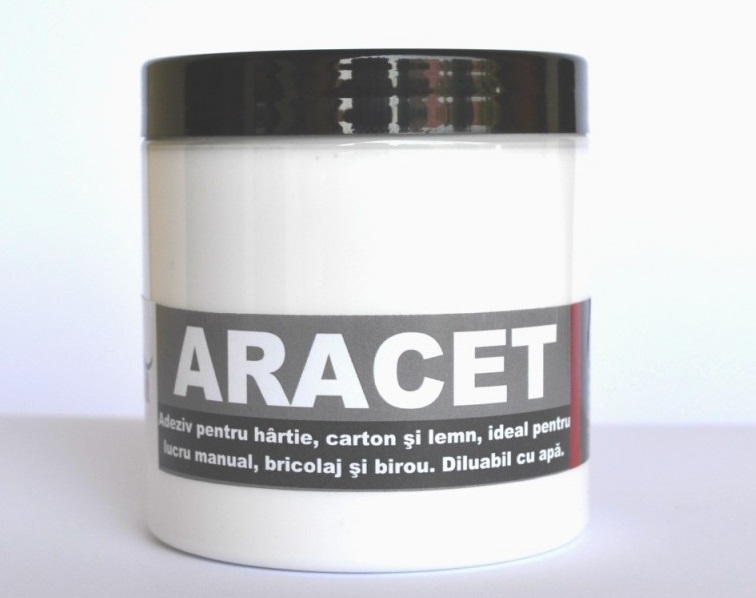
Characteristics of PVA adhesives
They are among the most commonly used for gluing wood and wood-based boards such as plywood, chipboard or MDF. Their ease of use, the fact that they are water-based and many other qualities make many people, both in industry and DIY, want to use them. The convincing features are:
- have no smell or color that could influence the final appearance of the work
- are water-based and non-toxic
- do not yellow over time
- are flexible and remain flexible over time
- are pH neutral
- does not give off hazardous gases during the process, even when hot bonding
- in most cases become transparent after bonding.
PVA adhesives not only bond wood but also paper or textiles. For best adhesion and bonding, the materials must be porous. Or at least one of them. Porosity helps because the adhesive gets into the material and anchors itself to it very well. Porosity also allows water to escape which leads to bonding.
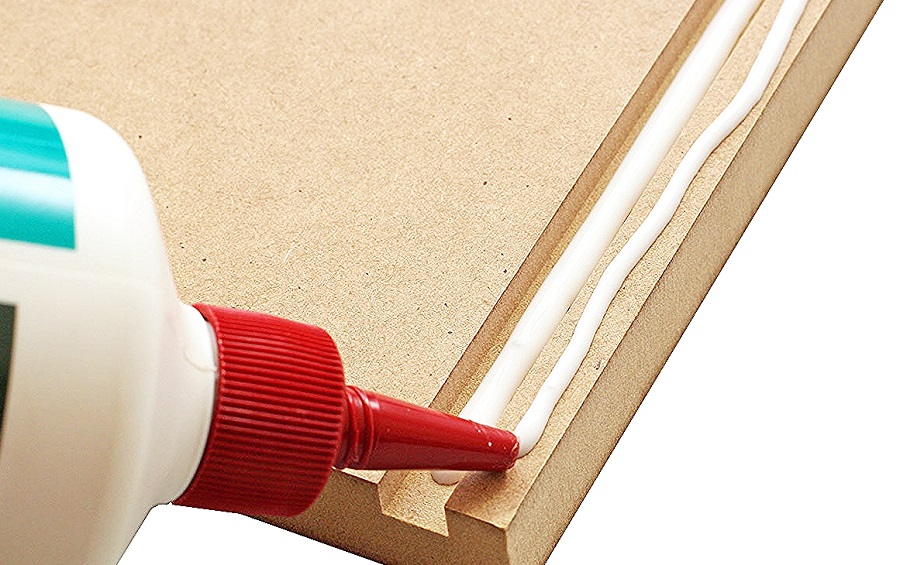
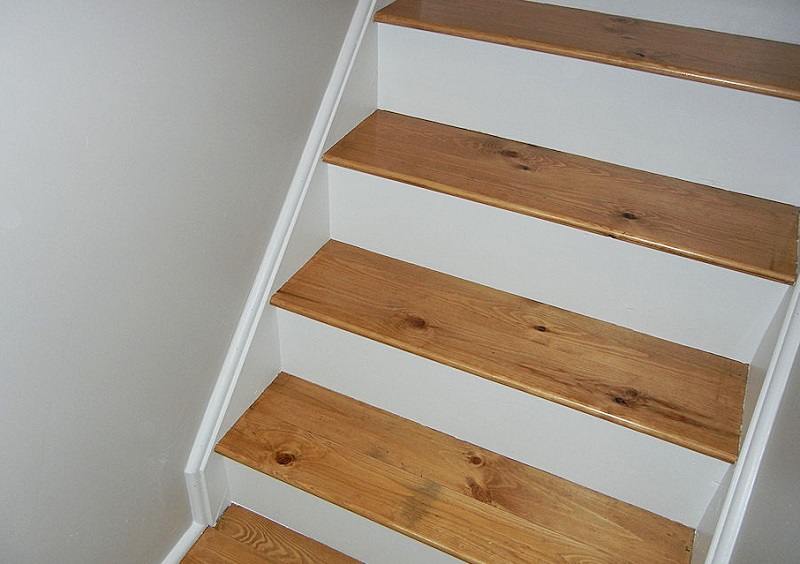
The influence of temperature. How to identify an adhesive that has gone through a freeze-thaw cycle
Adhesives are influenced by both high and low temperature. At high temperatures the water in the dispersion starts to leak out of the system and allows the molecules to come together and react. This is why storage at high temperatures is not recommended, nor do they have a very long shelf life. Over time, the water-polyactate equilibrium can break down and the adhesive polymerizes in the packaging and can no longer be used.
At low temperatures adhesives, being aqueous dispersions, freeze. This can affect them in two ways. On the one hand, freezing can upset the equilibrium and cause the polyacetate molecules to react. On the other hand, the ice crystals formed can interfere with the bonds of the polyvinyl acetate molecules, loosening them and losing their adhesive properties.
Many PVA adhesives lose their properties after a freeze-thaw cycle. Sometimes, looking in the original packaging, it looks like nothing has happened and can be used. But if the glue line is used it will have no strength and will fail when the object is used. As you know, a glued object should never fail on the glue line. If it is subjected to forces then the yielding must be in the wood.
A good glue should be runny, not sticky or crumbly, like cottage cheese (sweet cheese). If the viscosity has increased the adhesive should be agitated. If it does not become fluid and free of clumps then it is not good to use. Another way to check is to put a small amount on a surface and let it harden. If the appearance is chalky, the adhesive is no good. Also, if instead of becoming transparent it becomes whiter and chalky, then the adhesive is compromised and cannot be used.

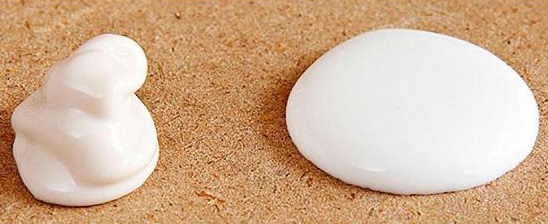
photo source: woodmagazine.com
Frost-resistant adhesive
But there are also adhesive withstands even multiple freeze-thaw cycles and can be used afterwards. This is the case with TISZABOND D3-D 3011, from Szolvegyfrom Targu Mures. It's an adhesive developed for a customer in Miercurea Ciuc, the cold pole of our country. The risk of the adhesive freezing in storage during the winter was very high and for this reason the manufacturer was asked to help develop a product that could work even after freezing. Szolvegy was able to achieve this and the customer has been using the adhesive for two winters already.
TISZABOND 3011 is a D3 adhesive which can be used for both carpentry and construction work. It can be used for gluing objects used indoors, in high humidity conditions, but also outdoors in sheltered or moderate climate areas. As needed, can be converted into D4 adhesive by adding a crosslinking agent (D3D4).
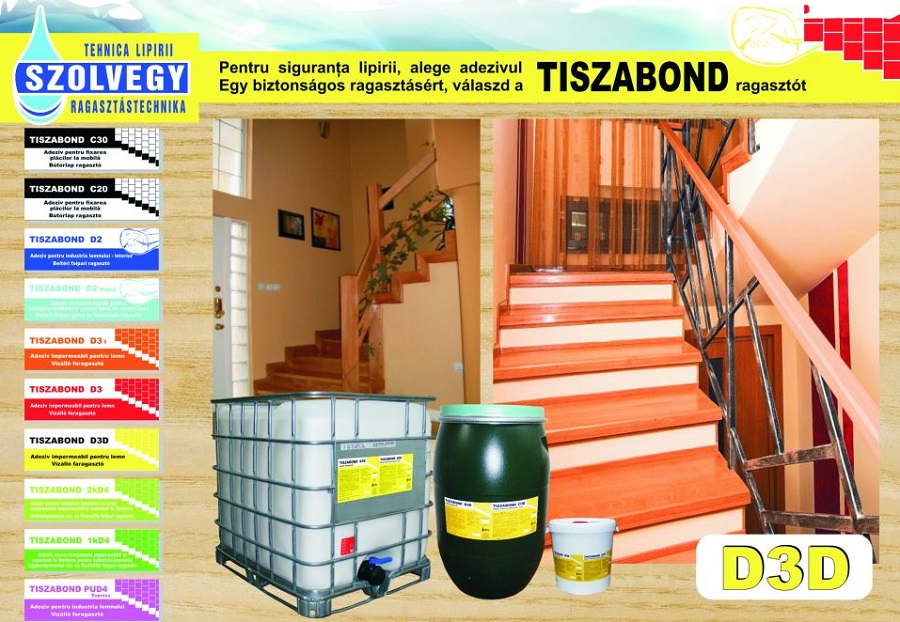
Recommendations that could help you
If you work with wood and use polyvinyl acetate-based adhesives, here are some recommendations and tips:
- Unhardened adhesive is easily cleaned with warm water (and possibly detergent) unlike hardened adhesive which is quite difficult to remove. If glue has spilled on the wood or excess has come off wipe it off while it is still fluid.
- The adhesive hardens faster in areas where there are air currents. Ventilation helps to remove water faster and trigger the polymerization reaction.
- If you are gluing different materials, at least one of them must be porous (wooden steps on concrete stairs, for example).
- Moderate pressure speeds up curing. Clamping or clamping forces the glue deeper into the wood which results in a faster and stronger bond.
- High temperature, dry wood and low humidity decrease the reaction time, while low temperature, high humidity of the wood and the working environment lead to a longer curing time.
- Dilute adhesive solution (1:1 with water) can be used to seal the fiber ends to solid wood. It is the way to reduce absorption and prevent stains from staining during stain staining.
- It can be used in combination with wood dust to make putties used to repair small defects in wood (holes, scratches).
Polyvinyl acetate-based adhesives are simple to use and affordable. They can be used in industrial, construction or household and DIY projects. And remember! If you need a frost-proof one, they exist and are already tested.
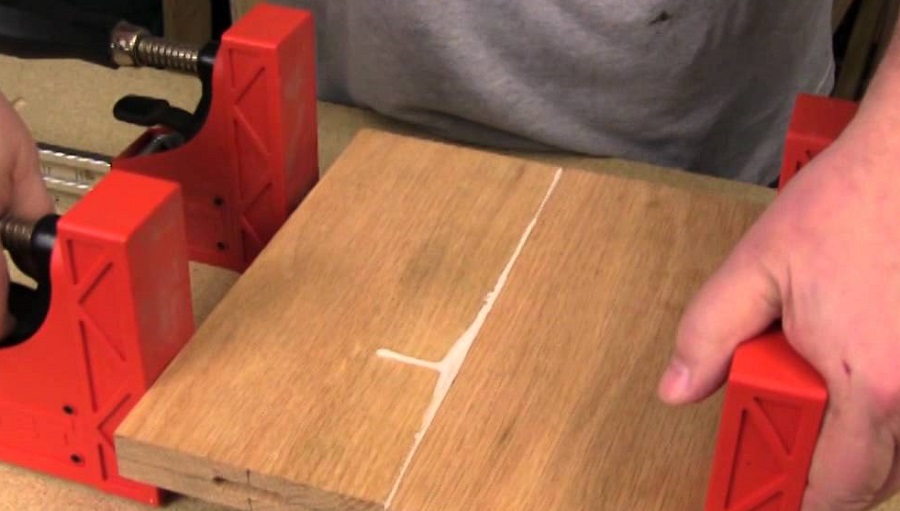
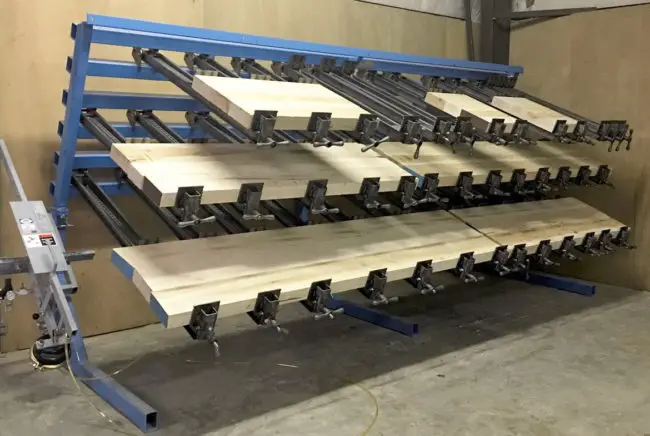






















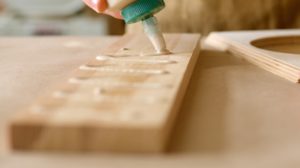
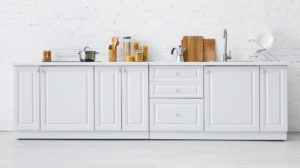

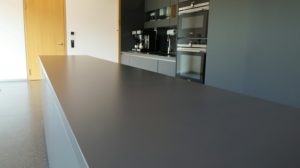
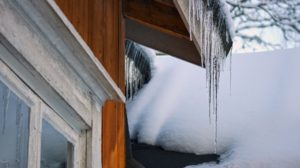
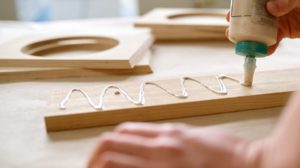
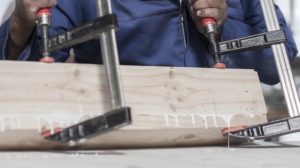
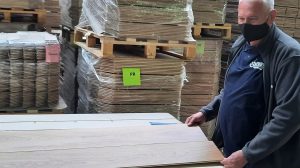



Thank you for the article, I have a question to you. among the derivatives (so to speak) of this PVA adhesive that you consider the most suitable for gluing paper, why I ask!!! I used such a kind of adhesive, a D2 UHU, the problem that arises is that being water-based paper tends to form wrinkles and become unsightly, thank you!
Good evening!
Thanks for your appreciation!
PVA adhesives are water-based and you will probably have problems with them whether they are D1 or D4, single or two-component. However, they are frequently used for paper bonding. You may have used an adhesive that was too thin or too wood and the paper had a longer absorption time.
If, regardless of the quality of the PVA adhesive, problems occur, use solvent-based adhesives (polyurethane, epoxy, cyanoacrylate, etc.) More information can be found in the link below.
All the best!
https://revistadinlemn.ro/2018/07/17/5-tipuri-de-adezivi-pentru-proiecte-de-bricolaj/
Can the aracite in the picture also be used for moss and lichen decorations?
Hello!
I don't know which of the pictures you are referring to, but if it is a wet environment you should use a D4 adhesive.
All the best!
Hello. I would like to know if a film of PVA adhesive applied to the surface of a wooden object, permanently placed outdoors, can constitute a protective waterproof barrier in a mountain climate environment. Thank you.
Hello!
The film will not stand the test of time and will bleach. PVA D3 and D4 adhesives are moisture resistant when put together with 2 pieces of wood. In this case, the adhesive is in very small proportion in direct contact with water, sun and weather. When the film is applied to the wood, the surface in contact with the outside is very large and the adhesive does not have the necessary characteristics to make it resistant to the action of environmental factors.
All the best!
I'm looking for a flowing, fluid adhesive that dries and bonds two 200cm/30cm granite flat surfaces to a concrete surface - vertically!
Mind you, this is not a joke - I want to use the method on a cavity - place the boards 1-2cm from the concrete then pour the adhesive.
Is it possible to find a suitable adhesive? I'm thinking of the famous Weber and mapei but doesn't liquefaction destroy the cohesion?
Thank you!
Hello
Does aracite in contact with fire burn?
Does the wood card have an aracite film burn ?
And if so, what's left behind, is there a deposit you want?
Hello!
Aracite is not flammable, it is a water-based adhesive. However, it is not flame retardant. If wood is covered with a sliver of aracite, it will burn if put on fire just like any other wood. During burning it is likely to give off some combustion gases which can be dangerous. It is not, however, one of the products considered toxic. If burning is complete, water and carbon (charcoal) are produced.